Death Valley R & R
After a year of isolation and with immunizations in hand (arm) we traveled with six friends to Death Valley for some much needed R & R. The first thing I always pack are my art supplies: watercolors, brushes, pens, Moleskin journal, portable microscope, and binoculars. I was going to do my first nature journaling while hiking! Our first stop was the Alabama Hills – a geological treasure nestled under the Sierra Nevadas and Mt. Whitney. I spent two days exploring these boulders, hiking, and drawing. This is one of my favorite places in California. The little town of Lone Pine has a great visitor’s center where I purchased two great books: a memoir by Kenda Atleework about her life in Bishop called Miracle Country; and an art book by Valerie and Michael Cohen filled with essays, and pen and ink drawings of trees in the high country titled Tree Lines . Tip: Park visitor centers usually have a terrific selection of books that highlight the history and natural history of the local area.
 Desert Mallow grew everywhere around the camp – I loved the sight of the bright orange flowers against the big tan boulders. Because I had phone coverage I was able to add some meta data and identify the plant using iNaturalist.
Desert Mallow grew everywhere around the camp – I loved the sight of the bright orange flowers against the big tan boulders. Because I had phone coverage I was able to add some meta data and identify the plant using iNaturalist.
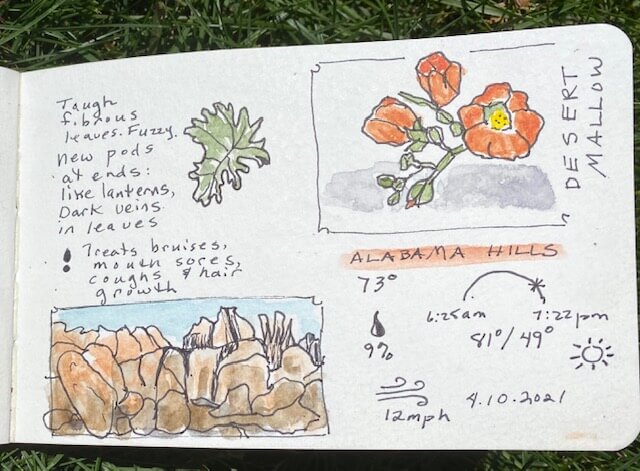 We headed into Death Valley on Sunday, the last day of Spring Break, and managed to find a good campsite off the grid. There were not many wildflowers due to the drought but the ones we saw got a lot of attention. Our hikes always included canyons because not only are they beautiful but they provide some shade from the sun. We explored Wildrose, Mosaic, Marble, Golden, and Hole in the Wall canyons. It was a first for me to draw during these expeditions and I loved it. Landscapitos, maps, and interesting plant details are easy to do when on the move.
We headed into Death Valley on Sunday, the last day of Spring Break, and managed to find a good campsite off the grid. There were not many wildflowers due to the drought but the ones we saw got a lot of attention. Our hikes always included canyons because not only are they beautiful but they provide some shade from the sun. We explored Wildrose, Mosaic, Marble, Golden, and Hole in the Wall canyons. It was a first for me to draw during these expeditions and I loved it. Landscapitos, maps, and interesting plant details are easy to do when on the move.
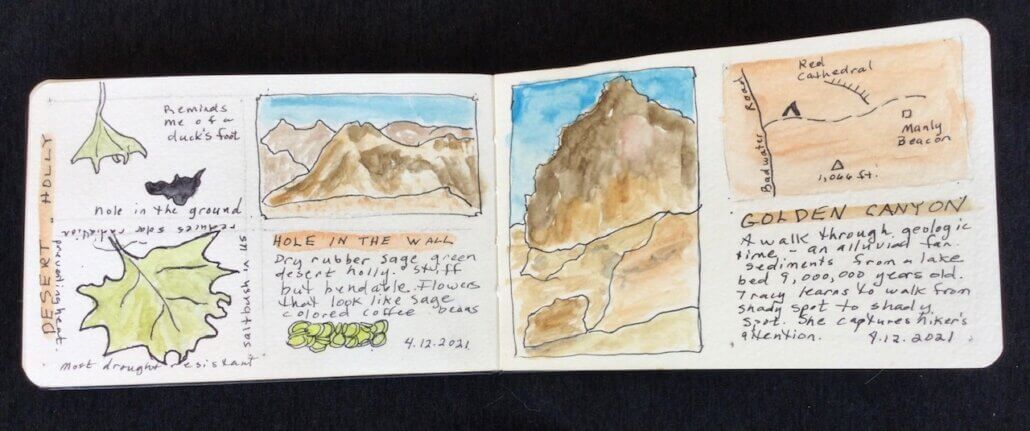 Creosote bush was abundant and really interesting – it’s host to an assortment of insects that coexist with this scratchy, tough bush. I was curious about the brown sphere on some of the bushes – turns out to be one of the insects. I wonder which one? No phone reception here so the metadata had to be estimated – easy enough in this place.
Creosote bush was abundant and really interesting – it’s host to an assortment of insects that coexist with this scratchy, tough bush. I was curious about the brown sphere on some of the bushes – turns out to be one of the insects. I wonder which one? No phone reception here so the metadata had to be estimated – easy enough in this place.
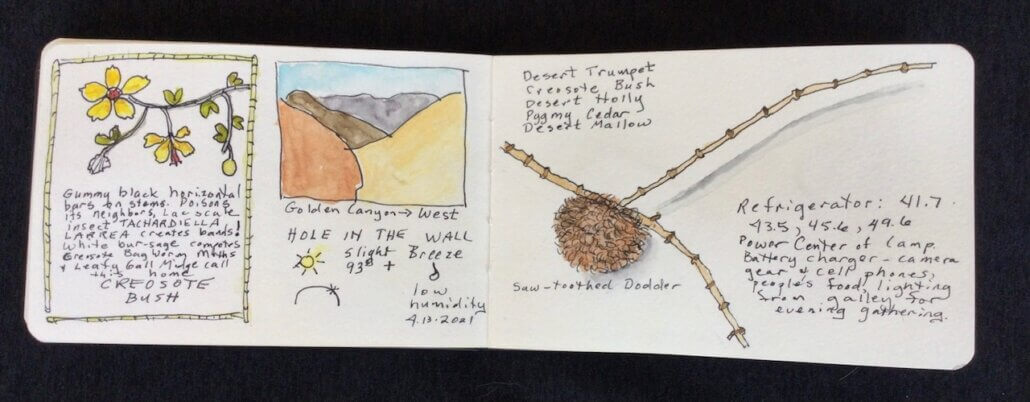 A photographer in the group set up a makeshift studio and created portraits of rocks. I painted some of his rocks – a celebration of the mundane.
A photographer in the group set up a makeshift studio and created portraits of rocks. I painted some of his rocks – a celebration of the mundane.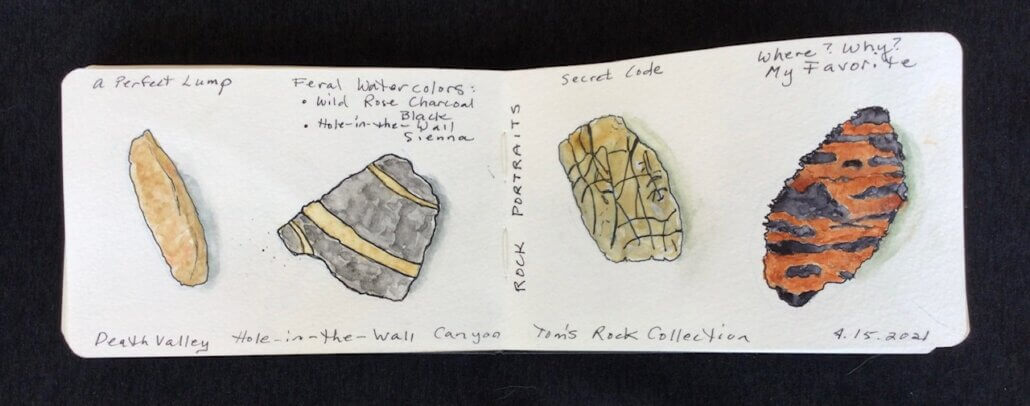 I was surprised to see California dodder. We have golden thread at the Arcata Marsh. I didn’t realize that it was parasitic. It doesn’t need to have chlorophyll because it gets what it needs from the “host”. The spider was found in one of the tents but not after biting the occupant. I think it’s a variety of wolf spider which has a painful bite. The desert trumpet could go unnoticed. It’s not very colorful or dense with leaves and branches but it makes up for it with the number of ways was used by local tribes. The little yellow flowers are a gift for anyone who pays attention to this spindly plant.
I was surprised to see California dodder. We have golden thread at the Arcata Marsh. I didn’t realize that it was parasitic. It doesn’t need to have chlorophyll because it gets what it needs from the “host”. The spider was found in one of the tents but not after biting the occupant. I think it’s a variety of wolf spider which has a painful bite. The desert trumpet could go unnoticed. It’s not very colorful or dense with leaves and branches but it makes up for it with the number of ways was used by local tribes. The little yellow flowers are a gift for anyone who pays attention to this spindly plant.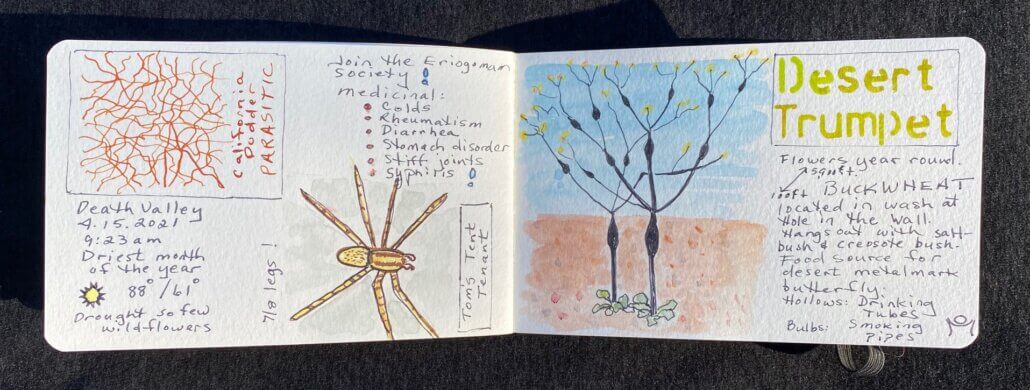
Titus Canyon is a 24 mile drive in the NW section of the park. The vistas were spectacular, the ghost town very interesting, and the petroglyphs were a highlight. The narrow exit from the canyon is one reason one mustn’t drive trailers through the canyon.
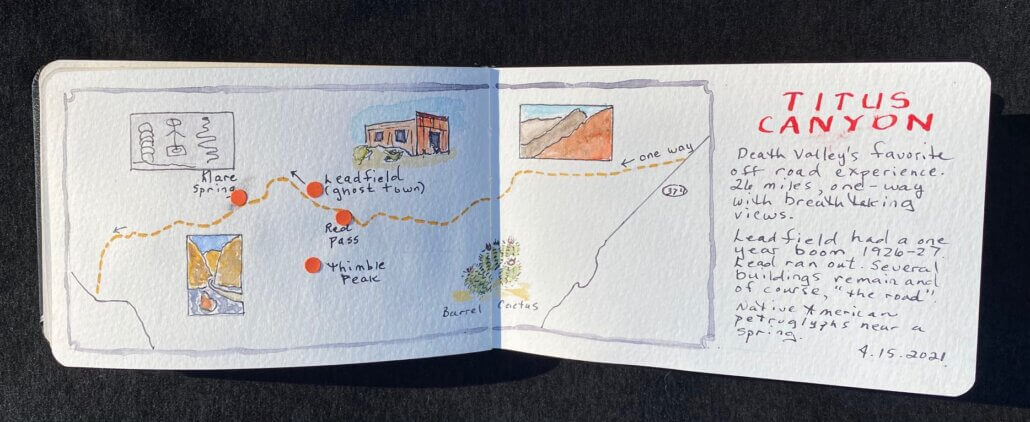 We enjoyed the sunset in 20 Mule Team Canyon.
We enjoyed the sunset in 20 Mule Team Canyon.
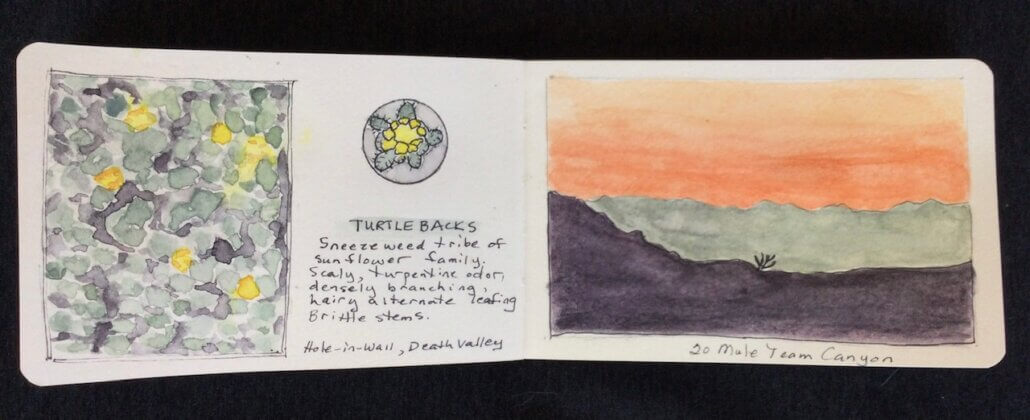 Stars at night with the waxing moon was our evening entertainment. What an exceptional trip and my journaling made all the difference.
Stars at night with the waxing moon was our evening entertainment. What an exceptional trip and my journaling made all the difference.

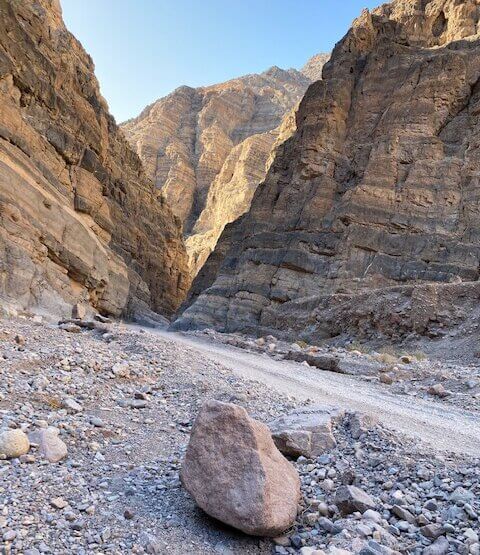
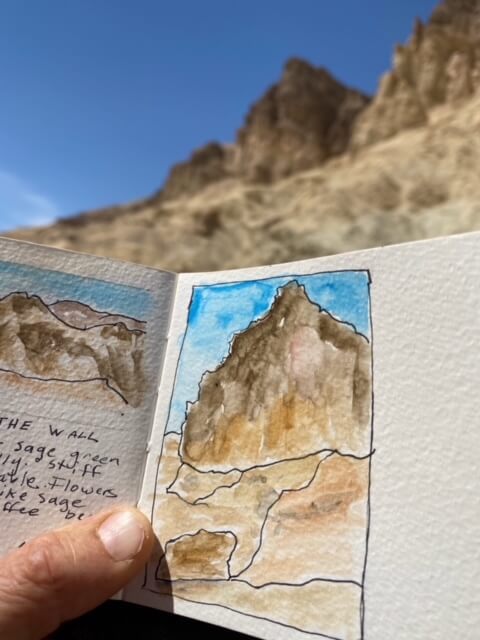
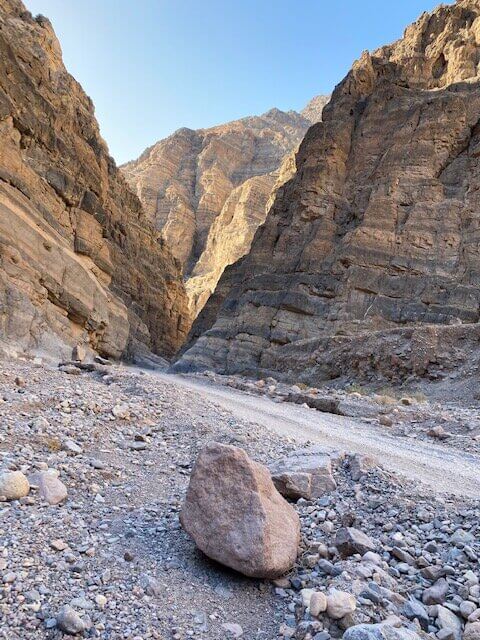
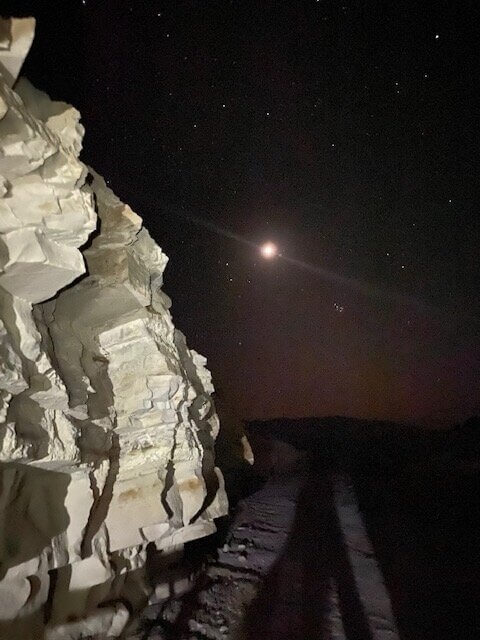


outstanding worx and play, ms. michele❣
Thanks Elle. You are pretty good at work and play yourself! I just posted about my day in the Bald Hills. Just amazing.